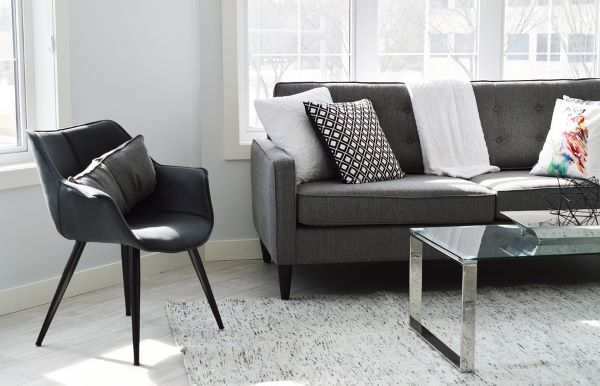In case you missed it see what’s in this section
Let's Talk

The Ultimate Guide To Renovating Your Living Room
Decorating and renovating your home can be a lengthy and costly process, but it can be extremely beneficial to you and your home.
First of all, a redecorated room such as your living room can boost your mood, increasing your level of pride in your home and providing you with a space you enjoy spending time in.It will also potentially increase the value of your home, too, which is great for when you decide to sell. To help you with the process of renovating your living room, we've created this in-depth guide for you to make use of.
Plan And Budget Your Renovation Project
The first step when it comes to doing any renovation project is to make a good plan. This plan should include as much as you can think of, ranging from the materials and paints you intend to use to your timeframe and the project's overall budget. When it comes to your spending, you'll realise how costly a redecoration or renovation project can be, but it's worth noting that you can decorate a living room on a tight budget if needed. Ultimately, you'll simply need to plan things out properly and find areas where you can cut costs when needed. Don't forget to try to overestimate your spending, too, as this will eliminate any issues you may have further down the line if you need to pay for other things that you didn't expect you'd need to pay for.
Think About What You Want From The Room
Living rooms are not all the same, and some will offer an entirely different atmosphere from others. There are many living rooms, especially large, open-plan ones, that are designed to facilitate guests and provide a space for being able to host gatherings. This will have a very different feeling to a traditional and cosy family room. You should figure out what you want from your living room early so you can design it properly. If you want a living room that will be a cosy and relaxing space for you and your family, you'll want to consider everything from a warm colour scheme to soft and comforting furniture. If you're creating a space for entertaining, you'll want to think about things such as creating enough space for people to manoeuvre through and also using bright and attractive décor and colours.
Decide On A Theme For The Space
You should now think about the overall theme for the space too. Just because you've chosen to create a cosy and relaxing space doesn't mean that it has to have a rustic, older appearance, although this can be a great choice for this type of atmosphere. There are many different types of themes you can choose for your living room to create the desired vibe. There are a few things to think about when it comes to creating a theme. First of all, you'll have to think about the colours of the walls, ceiling, fittings and fixtures, and furniture. After deciding on a colour scheme, you should also think about the decoration you'll be adding to the room.
Figure Out Your Order For Decorating
When decorating a room, especially when it comes to painting, you should do things in the correct order for efficiency. For example, if you start painting the wrong thing first, you might have to start again later on if you mess up the paintwork after doing other decoration or renovation tasks. Here's the order you should consider when decorating your living room.
Ceiling
- The first thing to tackle when painting and decorating your living room is your ceiling; if you intend to do anything with it, of course. Painting your ceiling with a stick roller is going to present you with one particular problem. That problem is paint spraying all over your walls, floors, and other things around your room. If you do this first, however, you know you're going to be painting over all of the other areas in your room that might get accidentally sprayed with paint. However, don't forget to move or cover furniture completely with plastic sheets that will repel any paint that may fall on them. You could also move furniture out of the room entirely. If you're going to be changing your floors, such as adding a new carpet or wooden floors, you won't have to worry too much about protecting them properly, but it's still worth putting some sheets down on the floor anyway.
Walls
- Next, you'll want to move on to decorating your walls. Of course, another step to consider here might be to replace any electrics and switches beforehand, as this can damage the paintwork. Don't forget, if you're going to be repairing or replacing electrics in your living room, you might want to find someone reliable from a site like MyBuilder who can do the job for you safely and effectively. Once the electrics have been sorted, tape around your switches and sockets so you don't get paint on them and get started on your walls.
Skirting Boards
- Your next target for painting or replacing is going to be your skirting boards. Scuffed and damaged skirting boards can be replaced, or you could even just choose some with a different design if you're not happy with your current skirting boards. Painting them should also be a separate task from painting your walls as it's likely they'll be a different colour to the walls due to their purpose of serving as a border for your room. Of course, there's nothing stopping you from having them in the same colours as your walls, as skirting boards are primarily there to protect your walls from the damage of scuffs and knocks around the base. Either way, sort these after doing your walls, no matter what you decide to do with them.
Windows And Doors
- Painting your window frames and door frames is the next step. You should consider taping the wall around each frame before you start painting them, as you won't want to accidentally get paint on your walls and have to go over it again. Once you've painted the frames, let them dry and then move on to the doors themselves. Again, we can't stress enough the importance of masking tape on areas you don't want to get paint on. For example, if your doors have glass in them, you might want to tape the edges to avoid paint smears along the edges of these glass panels.
Flooring
- Once you've painted everything and let it all dry sufficiently, it's time to turn your attention to the floors themselves. Replacing carpets or adding wooden floors can be a lengthy process, but it's only going to take even longer if you do this first and then have to redo it or clean them after getting paint on them. If you're replacing your skirting boards, it's worth nothing that this might be worth doing after your flooring, as you'll be able to fit it over the top of the floor at the edges of the room.
Add Some Furniture
- Finally, you'll want to bring your furniture in, whether it's new or your current furniture. Make sure you do this as carefully as possible to avoid ruining paintwork or scuffing your brand-new floors. You could consider adding temporary padding to door frames or hard corners on your furniture to minimise damage if they do end up making contact during the movingYou could also addpermanent pads to the bottom of certain furniture to protect your floors from being scratched. The ultimate goal here is to be careful and considerate of your work and not rush because you're excited to see the room in its final state.
Weather in Swindon
Listings




















